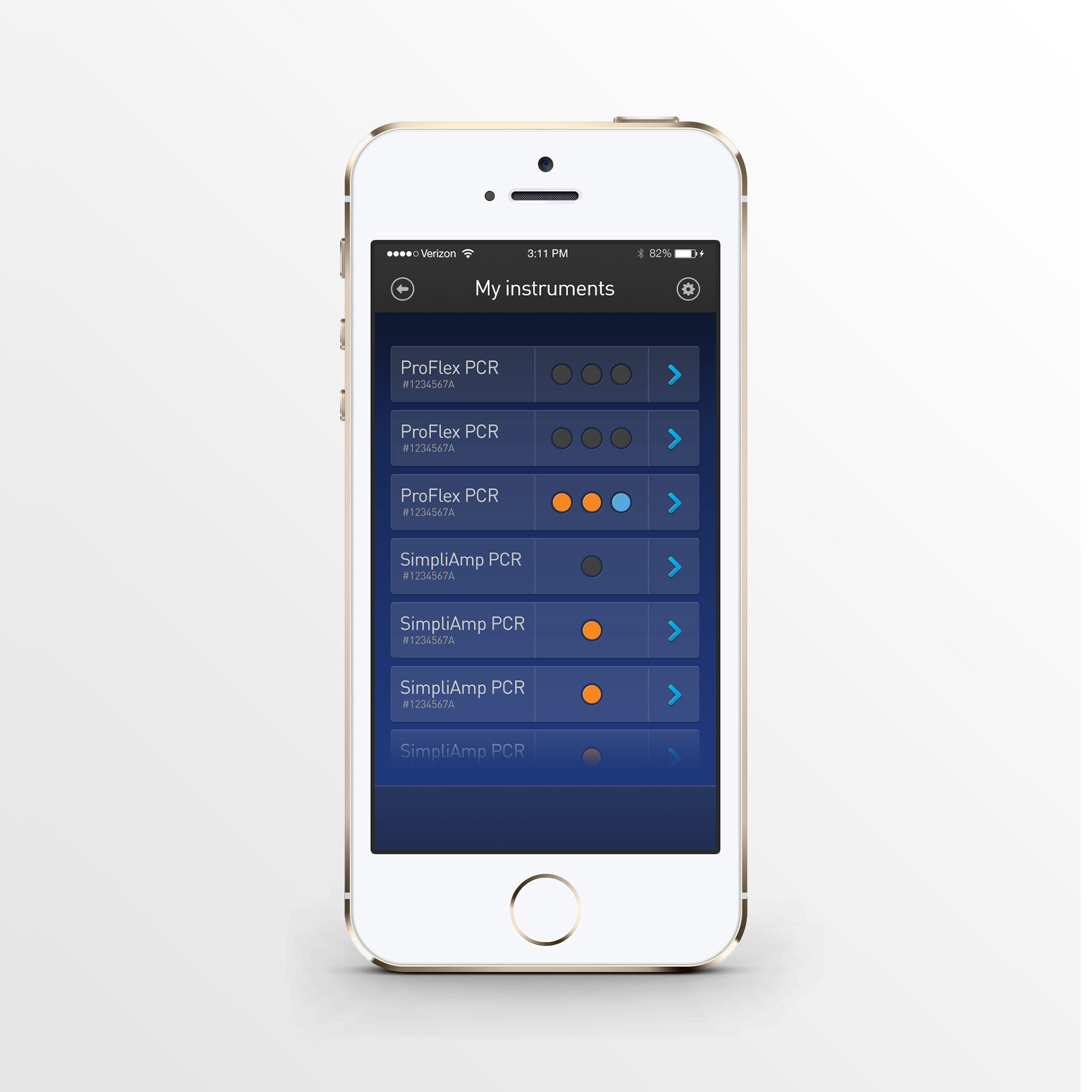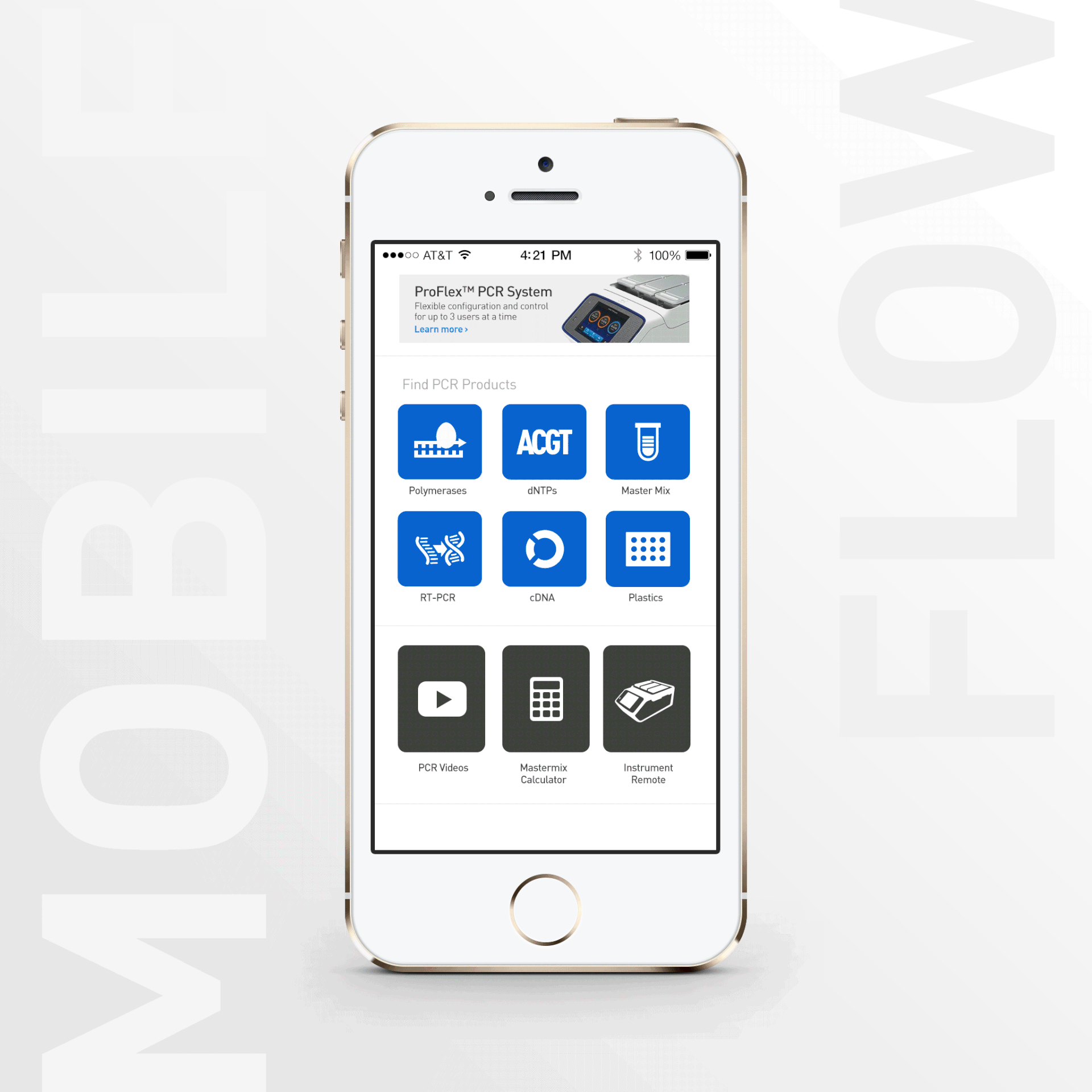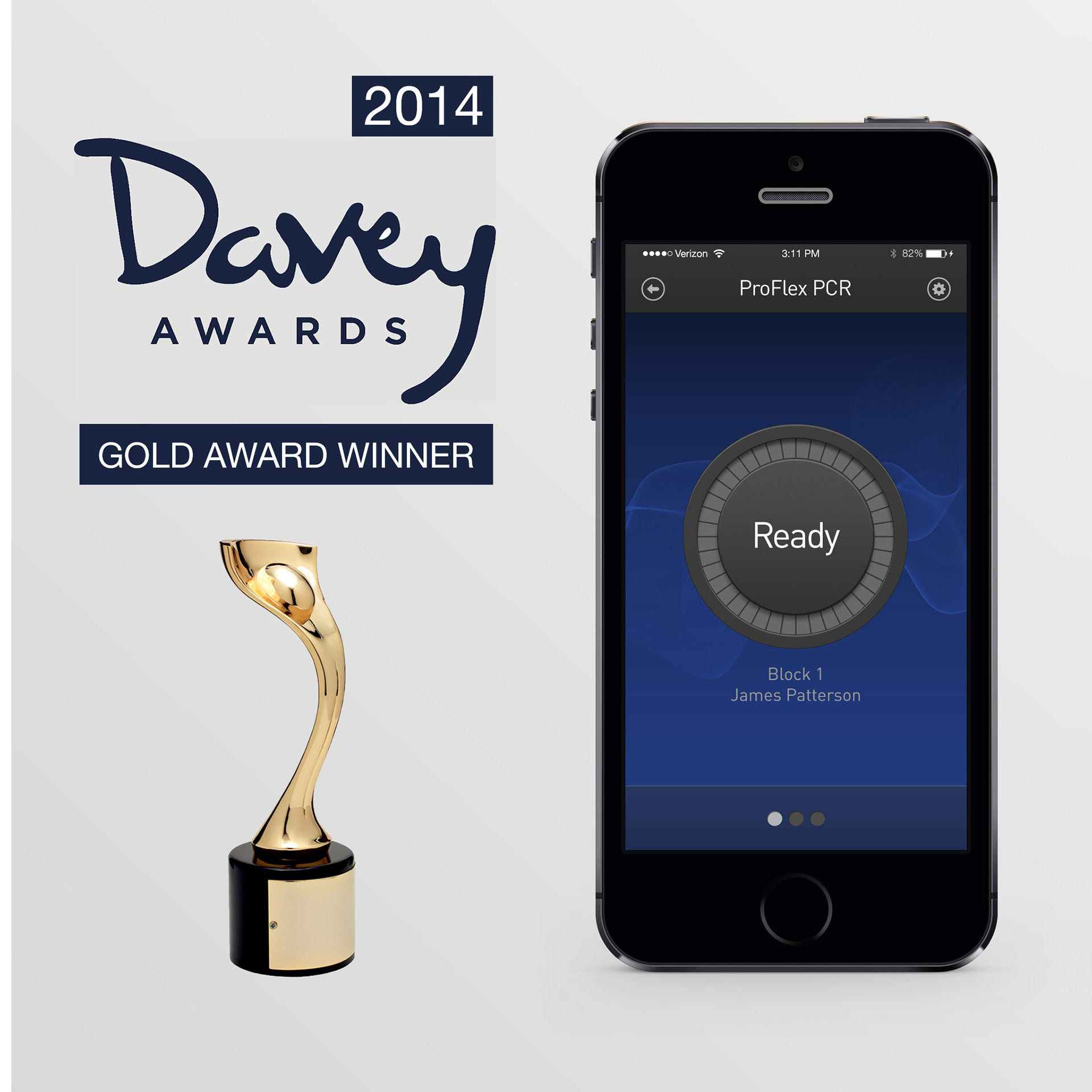The Product Team
--------------------------------------------
--------------------------------------------
1 UI Designer
1 UX Designer2 Industrial Designers
-------------------------------------------
Voice: Courageous, energized, & inspired
Visual Tones: Alive, vibrant, & exude vitality
Project duration: 1 year for Thermal Cycler;
Full family line-up using this new design system took about 10 years to fully take effect. The full thermal cycler system can be seen in the product family video, below.
Visual Tones: Alive, vibrant, & exude vitality
Project duration: 1 year for Thermal Cycler;
Full family line-up using this new design system took about 10 years to fully take effect. The full thermal cycler system can be seen in the product family video, below.
Overview
Build a digital presence for scientific instruments that are iconic and easy-to-use, beginning with the Applied BioSystems ProFlex PCR Thermal Cycler.
The Challenge
In 2013, Life Technologies's business model was not only to create their own line of innovative scientific instruments, but to also purchase smaller companies whose products they thought would complement the innovation of technology. In doing so, brand disruption became an issue. All of a sudden, their line of products looked very different from one another. In order to launch product in a quick manner, they would use the old instrument designs, and slap their logo on it. This led the company to come up with the idea of creating it's own internal design group, consisting of Industrial Design, UX/UI Design, and Research, with a goal of creating world class scientific instruments that live in harmony with one another. My role consisted of creating a new digital presence that would help align the interfaces across all products within the company.
My Approach
My particular focus, as the lead UI designer, was to come up with a new (digital) design system that contained a single look and feel, that could work for a multitude of branded instruments, across Life Technologies line of products. The goal was to create a system that not only unified a grouping of brands, but also stood out from the crowd and was memorable/iconic. The first products to showcase this look and feel would be the Applied BioSystem's family of PCR Thermal Cyclers.
Creation of an iconic trait
A common observation in labs filled with various instruments was the inconsistency in screen layouts. How could we unify these screens despite their different work states? The answer lies in understanding the core workflow. At a high level, the workflow consisted of three main parts: Setting up the run, Performing the run, and Finishing the run. This high-level perspective led us to conceptualize a component that could represent each state of a flow: an empty state, a filled state, and then back to another empty state. This line of thinking led to the creation of the dial.

Temperature below 30ºC is blue

Temperature above 30ºC is orange
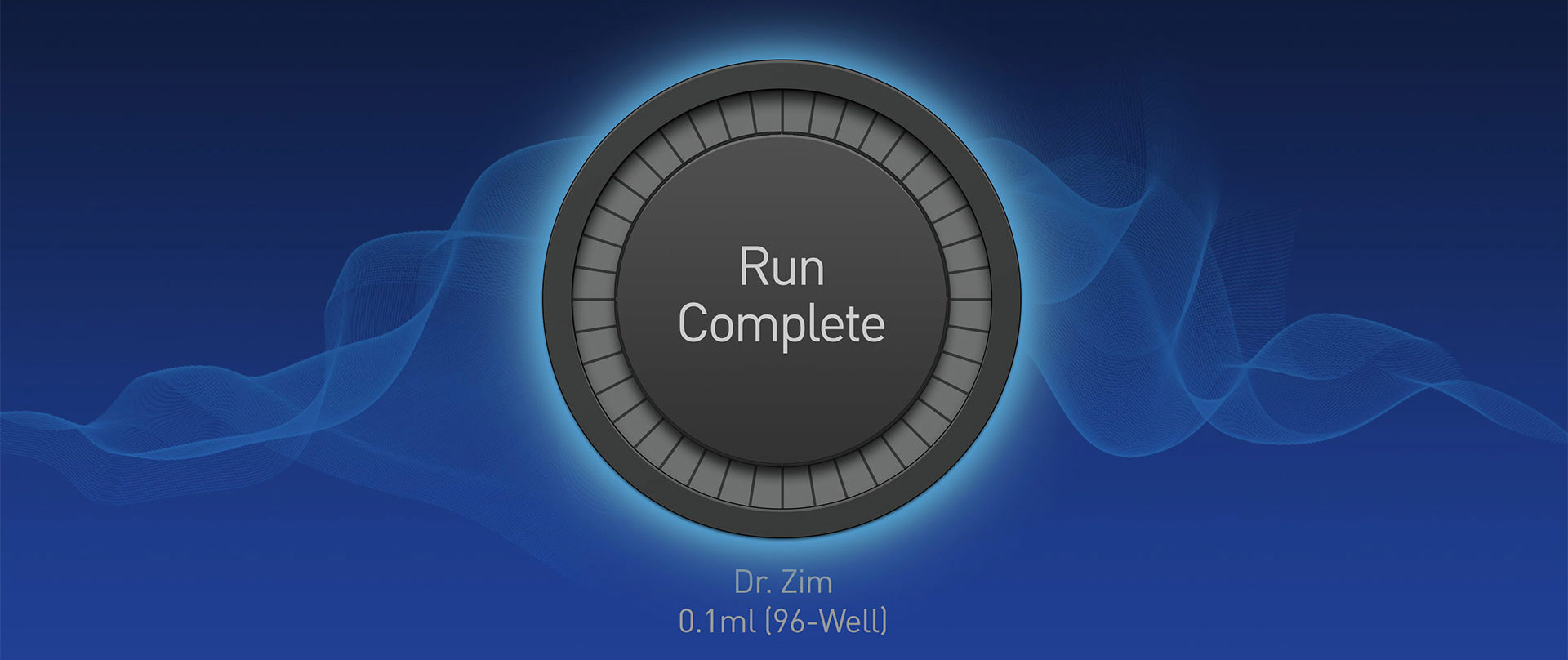

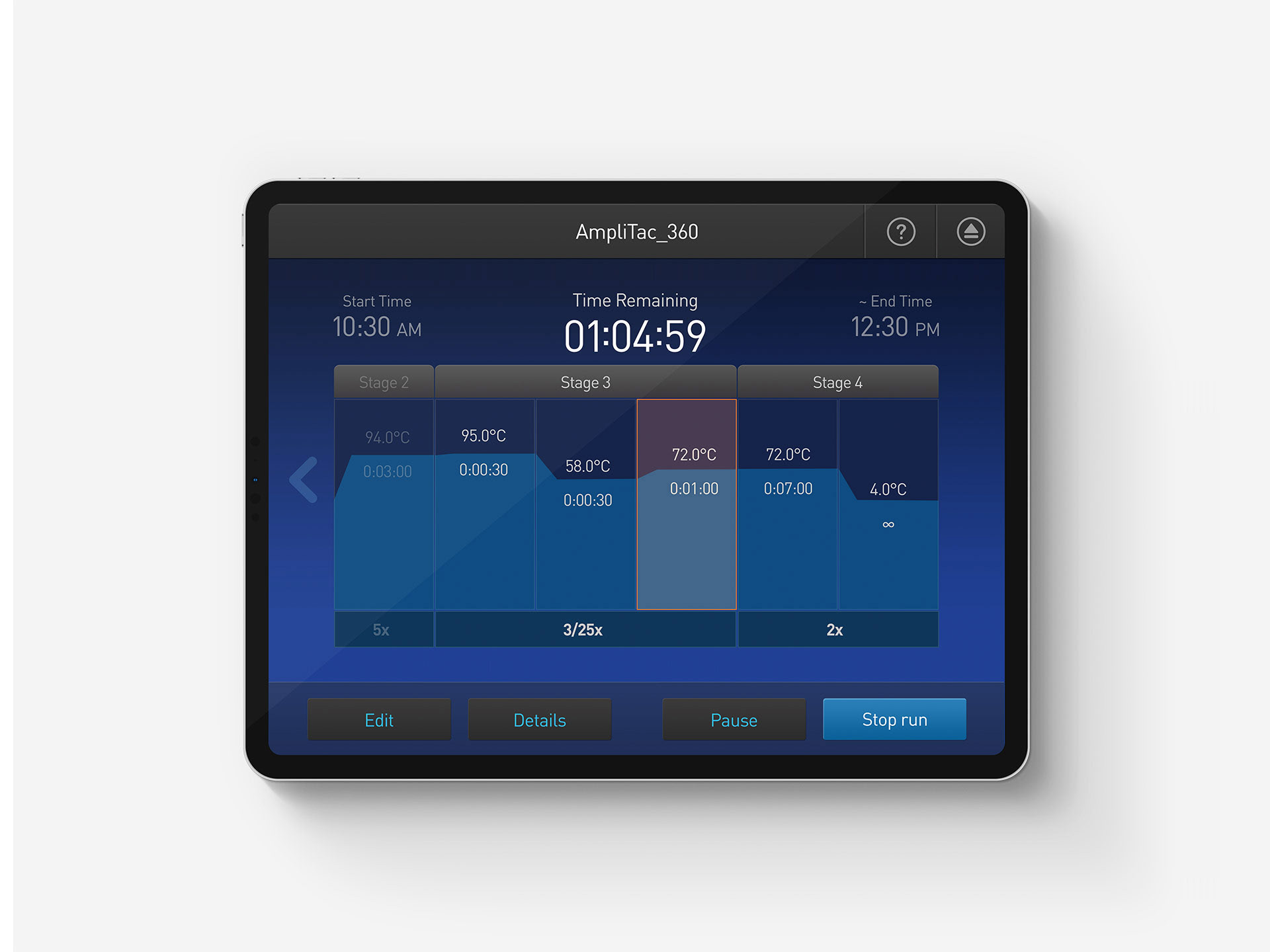
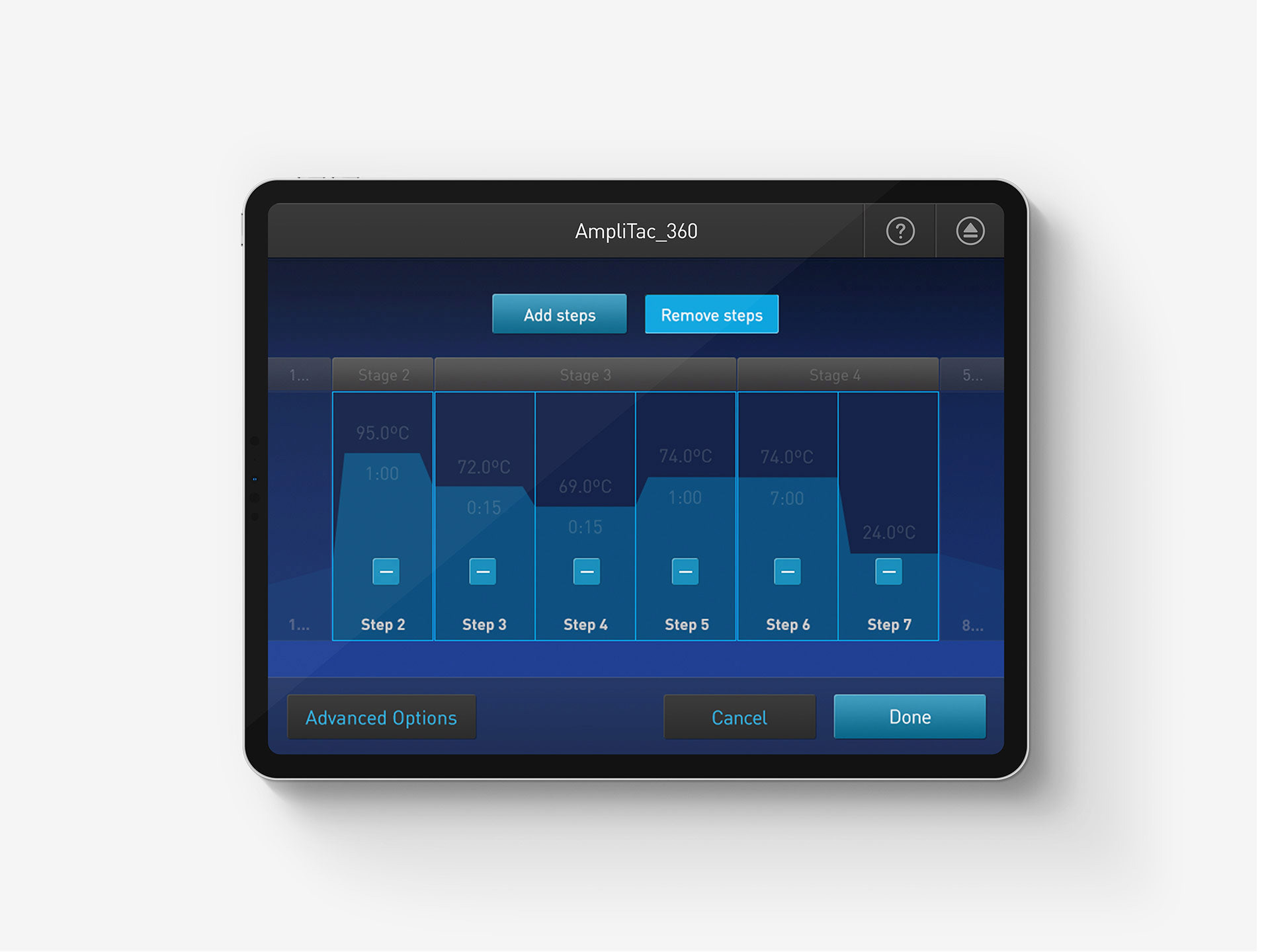

Templates and component creation
After a lot of research and wire framing, we were finally able to start finalizing a set if components, to be added to our library. From here, I set out to create a set of templates, to be used, along with a style guide, to help development teams emplement final code. I also took part in weekly style guide meetings with other user experience designers in the company. Although they worked on websites and applications, it was important that they also were informed with products style guide, so we can all work in harmony.
The Final Product
Once Life Technologies began seeing profit and net sales from the initial ProFlex PCR instrument launch, requests for more product began racing in. The work has been plentiful, but the amount of positive feedback has been overwhelming. Within the course of 2-3 years, Life Technologies was bought by Thermo Fisher Scientific, where I currently work. The success of their innovative products can be seen and felt worldwide. It's been awfully fun to see the full family of thermal cycler products reach maturity. The video, below, puts this in full display.
Mobile Application Platform
After the success of the initial instrument, itself, I was then asked to help create a mobile design system for a PCR Essentials app. This application is a tool for molecular biology researchers to find product information on Taq polymerases, dNTPs, gels and stains, RT-PCR products, cDNA products, and master mixes. There is also a handy master mix calculator to design and edit your PCR master mixes on the fly and send them via text or email. But, a key piece created was the ability to monitor your runs, remotely. This new tech allows scientists the freedom to set up runs, then leave the lab, to go about their business. This was something brand new, that had never been done before, for PCR instruments. Overall, this mobile application was a strategic advantage for the company as the life sciences industry, in general, was slow to adopt new mobile technology. In the end, it won a Gold Davey Mobile application Award, which was nice.
